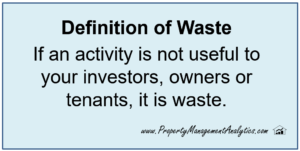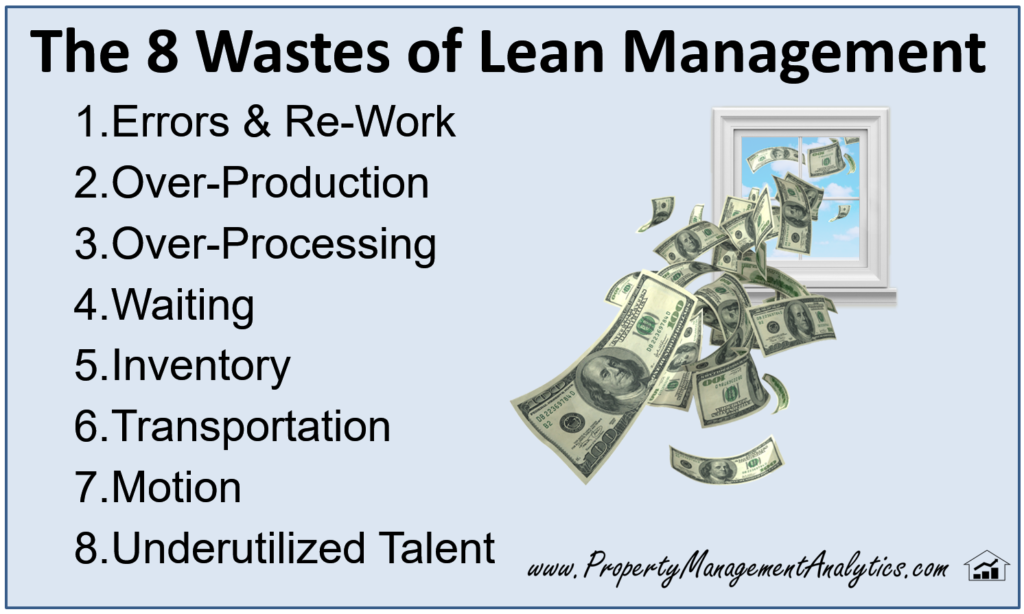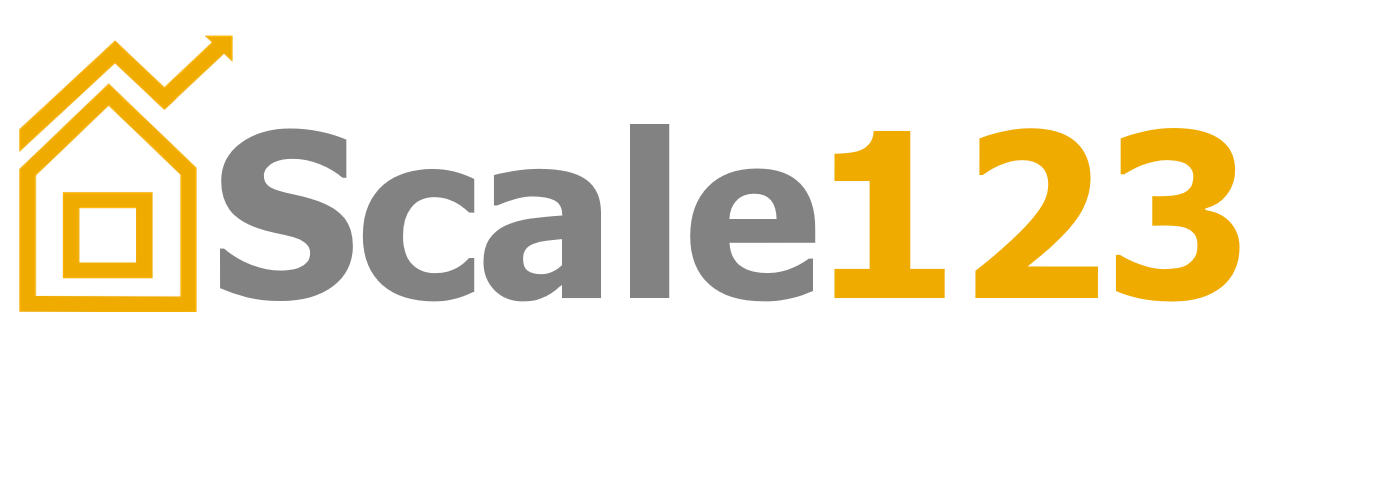Lean Management methods are widely practiced in many industries, but I have not come across Lean methods in property management.
A key concept in Lean Management methods is “waste”. In the context of Lean methods in property management, anything your company does that is not useful to your investors, owners or tenants is called “waste”.
Waste in Business Operations
Waste is identified in business operations by examining the processes. We look closely at the activities performed and determine which ones are adding value to our “customers” (investors, owners, tenants).
Process steps that don’t add value are considered for elimination.
To decide if an activity is useful, ask yourself “would my customers be willing to pay for this activity?” Eventually, each activity can be categorized in one of three ways:
- Adds value (in the eyes of the customer)
- Doesn’t add value but has to be done
- Doesn’t add value, consider for elimination

Eight Types of Waste in Lean Management
- Errors & Re-Work
Wasted due to having to do things over because a mistake was made. For example, errors were made in filling out an application, so it had to be re-done. In a previous post, I used the term “defect” for errors.
- Over-Production
Waste due to doing more than required. For example, applying three coats of paint when two are sufficient. Or, making hardcopies of forms and storing them when electronic records would be sufficient.
- Over-Processing
Waste due to performing more steps than necessary to complete a task. For example, having to re-enter tenant information in three different screens when the information could be copied. Or, having to get two approvals on a credit check when one approval is sufficient.
- Waiting
Waste due to time lost waiting for an activity to be completed. For example, time lost waiting for the results of an employment verification. Or, a maintenance tech having to wait to enter an apartment because of miscommunication with the tenant. Also, having too many interruptions results in delays in getting an activity completed, causing the downstream activity to also be delayed.
- Inventory
Waste due to having too much of something on hand. For example, having a two-year supply of printed blank tenant application forms. This inventory ties up working capital, takes storage space, and some might become obsolete before it gets used.
- Transportation
Waste due to having to travel to a location to complete an activity. For example, having to meet a prospective tenant for a showing could be considered unnecessary. Having to move equipment or supplies from location to location could also be a form of waste.
- Motion
Wasted due to too many movements in order to complete a task. For example, having to walk to the filing room, then the copying machine, then back to the filing room. Or, having to hunt for the stapler because it is not found in its usual spot.
- Underutilized Talent
Waste due to not effectively utilizing the talents of your team. For example, when people have unclear roles, or lack training, they are not able to perform as effectively as they could. Not giving authority to staff for some situations can also lead to waste, as defined above.
Lean Methods in Property Management
This was meant to be an introduction to Lean Management. Lean methods, along with the teachings in Lean Six Sigma, are very relevant for utilizing analytics in a property management process improvement program. Waste is one of the key concepts in Lean methods. In future posts I will introduce other Lean methods in the context of property management.

About the author: Saad Shah helps property management executives improve business results through the use of analytics. Saad can be reached at 248-601-6400, or sshah @ metricx.com.


